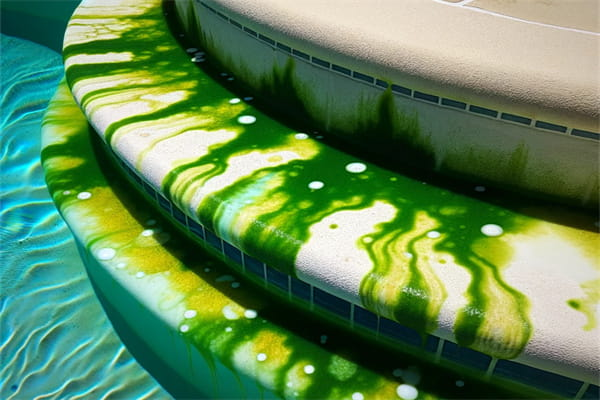Maintaining a clean and inviting swimming pool can sometimes feel like a balancing act, especially when it comes to controlling algae. The right algaecide can be a game-changer, but how often should you use it? In this blog, we’ll dive into the factors that influence the frequency of algaecide application, outline a routine maintenance schedule, highlight signs that your pool needs algaecide to keep your pool in top shape.

Ⅰ. Factors Influencing Algaecide Frequency
Several factors can determine how often you need to add algaecide to your pool. Let’s explore the most significant ones:
1.Pool Usage:
Frequency of Use: The more you use your pool, the more organic material (like sweat, sunscreen, and oils) enters the water. These contaminants can feed algae, necessitating more frequent algaecide treatments.
Number of Swimmers: If you often host pool parties or have a large family, the increased bather load can introduce more organic matter, promoting algae growth. More swimmers mean more frequent need for algaecide.
2.Environmental Conditions:
Temperature: Warm weather accelerates algae growth. During summer months or in warm climates, you might need to use algaecide more often.
Weather: Rain and wind can carry algae spores into your pool. After a storm or windy day, it’s wise to check your pool and possibly add algaecide.
Sunlight Exposure: Algae thrive in sunlight. If your pool gets a lot of sun, especially during peak sunlight hours, you may need to increase the frequency of algaecide applications.
3.Water Chemistry:
Chlorine Levels: Chlorine helps control algae, but if your chlorine levels are low, algae can bloom quickly. Ensure you maintain proper chlorine levels and adjust algaecide usage as needed.
pH Balance: Fluctuations in pH levels can promote algae growth. Maintaining a stable pH balance is crucial for effective algae prevention.
Other Chemicals: Balancing other pool chemicals, like cyanuric acid and alkalinity, also helps in keeping algae at bay.

Ⅱ. Routine Maintenance Schedule
A proactive maintenance schedule can prevent algae from becoming a problem. Here’s a guideline to keep your pool sparkling:
1.Weekly Maintenance:
Adding algaecide weekly is a good rule of thumb. This routine helps in keeping algae spores under control and prevents them from establishing a foothold.
2.Bi-weekly or Monthly Adjustments:
Depending on your pool’s condition, environmental factors, and usage, you might find that bi-weekly or even monthly algaecide applications suffice. Always monitor your pool closely and adjust as necessary.
Ⅲ. Signs That Your Pool Needs Algaecide
Sometimes, despite regular maintenance, algae can sneak into your pool. Here are some signs that it’s time to add algaecide:
1.Visible Algae Growth:
Green, Yellow, or Black Spots: These spots indicate different types of algae. Green algae are the most common, yellow or mustard algae cling stubbornly to surfaces, and black algae appear as dark spots in cracks and crevices.
2.Discoloration of Pool Water:
Green Tint: A green tint to your pool water is a clear sign that green algae are present.
Yellow or Brownish Tint: Yellow or brownish discoloration can indicate mustard algae or other types of algae affecting your pool water.
3.Foamy Water:
Foam on Water Surface: In some cases, algae can cause foaming on the water surface, which can be another sign that your pool needs treatment.
4.Chemical Imbalances:
Increased Chlorine Demand: If you notice that your pool requires more chlorine than usual, it could be a sign that algae are consuming the chlorine.
pH Imbalance: Persistent pH fluctuations might indicate the presence of algae.
Ⅳ. Conclusion
By understanding the factors that influence algaecide frequency, maintaining a regular schedule, recognizing the signs of algae, and implementing preventive measures, you can keep your pool in pristine condition. Remember, a little proactive care goes a long way in ensuring a clean, safe, and enjoyable swimming experience for everyone.
 Instant
Quote
Instant
Quote Email
Us
Email
Us